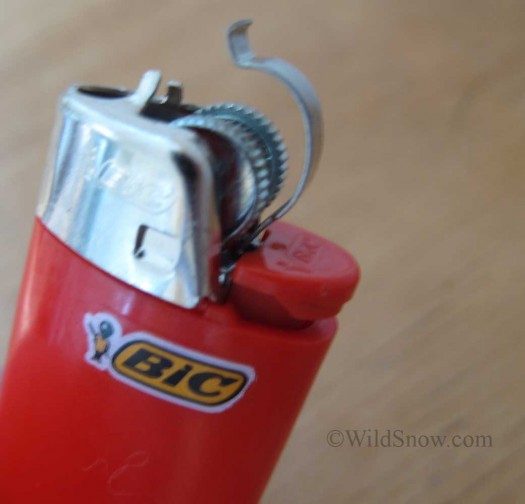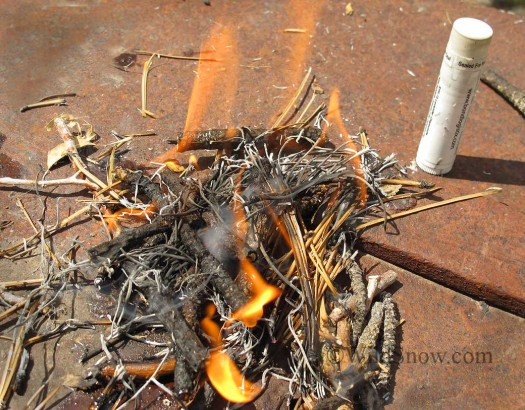I’ve tried starting a few survival type campfires from scratch in cold and wet conditions. My early attempts tended to be epics involving half charred wads of kleenex and poetic thoughts such as “where there is smoke, there may be no fire.” But with some practice and the proper equipment I’m feeling confident I can start an emergency campfire just about anywhere I can find fuel.
Key is to carry multiple ignition sources in your emergency kit. We’ve covered this in a few other “fire starting” blog posts, but the minimum is to carry a couple of small butane cigarette lighters as well as a pack of waterproof matches, along with kindling material such as few cotton balls soaked with Vaseline. In addition, carrying a small flint type ignition device is a good idea (and is legal in your airline luggage, while my understanding is that it’s better to leave butane lighters and matches out of your luggage).
Available lighters worked fine for us until the 1990’s. After that, regulations required child safety redesign to make them harder for children to operate. Bic complied by installing a metal guard that must be pressed firmly in order to rotate the spark wheel. Technically the guard is designed to prevent “85% of children under the age of 51 months” from lighting up. I don’t know how effective the changes were, but they did make the lighters harder to operate, especially if your fingers are stiff from the cold. Is it possible the Bic “improvements” could kill more people in desperate survival situations than the number of children they saved from immolation? I’d like to see the numbers.
At any rate, after undergoing a slight mod Bic lighters are our favorite inexpensive ignitors. No, at WildSnow.com, even a simple lighter isn’t safe from the tool box.
The safety guard can be easily removed by opening the metal tabs on the top and popping it off. In addition to making the lighter easier to ignite, it allows you to dry the spark wheel if it’s wet by rolling it on your pant leg or jacket sleeve. Another trick we discovered is that sunscreen is flammable. We’ve had the best luck with lip balm, so if you need to start a fire and don’t have your regular fire starting kit, rub twigs with your stick of lip balm which will make it easier for them to catch the flame from starter twiggies.
We carry two mini Bics instead of one large one and that gives us a spare. The mini Bics are the same size as duct tape which we wrap around the stem. A rubber band wrapped around the trigger keeps it from getting accidentally turned on.
Butane compresses in the cold which makes the flame small, so warm the lighter in your hand or pocket before use. Lighters with flame adjustment tabs are handy to maximize flame size. I haven’t found a way to increase flame size on Bics without the flame adjustment tab.
Beyond all that, over the years we’ve found that no matter what fire starting items you carry, they should be tested. A number of years ago, one member of the WildSnow crew had to be rescued because he got benighted and couldn’t start a fire with gear he carried and thought would work. Gear testing should include everything you carry, not just your beacon.
WildSnow Girl is our pseudonym for gal posters who wish to remain anonymous, or use another name just for fun. Used for female oriented backcountry blog posts at Wildsnow.com, and also general subjects covered by WildSnow girls.


